How did you get started with SU?
-
I had been trying to find a 3D program for some time in the late 1990s'. I love to draw, but the time it takes just didn't fit with impatient clients. In 2002 at an AIA convention, I stumbled upon the SU booth and couldn't leave. My wife watched me for a while and said "your going to buy that aren't you". Got my 2.0 disk and started using it right away - at the convention. (The "SU people were great by the way.)
It has been a great help for my clients (and me) to quickly see many alternates and come on to a better solution - same story for everyone that uses the program.
I can't locate my very original drawings, but did find a small church from 2002. A small (50) congregation with shoestring budget wanted to add on to their existing building to grow their group. I have attached early studies and some photos of the actual building. Also have attached a few more recent projects. Some improvement over the years, but I feel sort of stuck at a mediocre level and hope to inch closer to our forum greats. Thanks for all your help over the last 8 years.
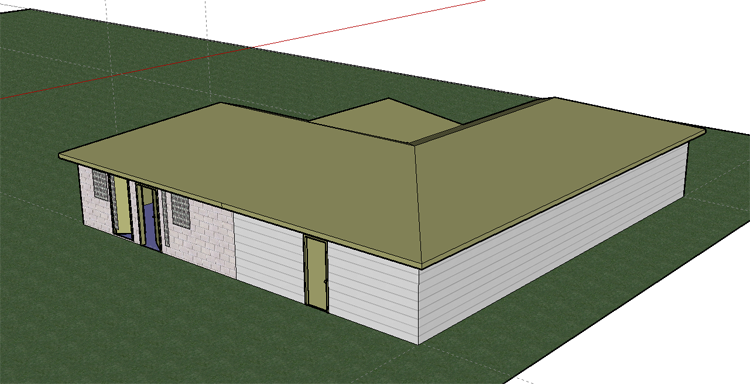
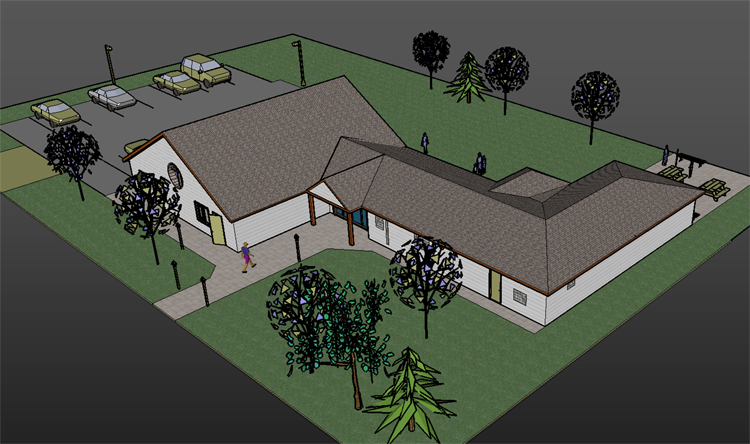
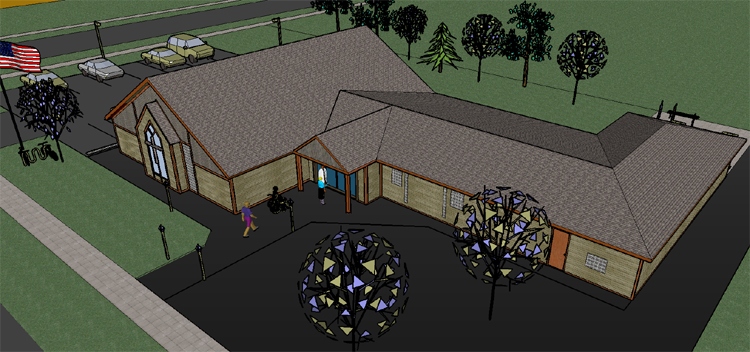
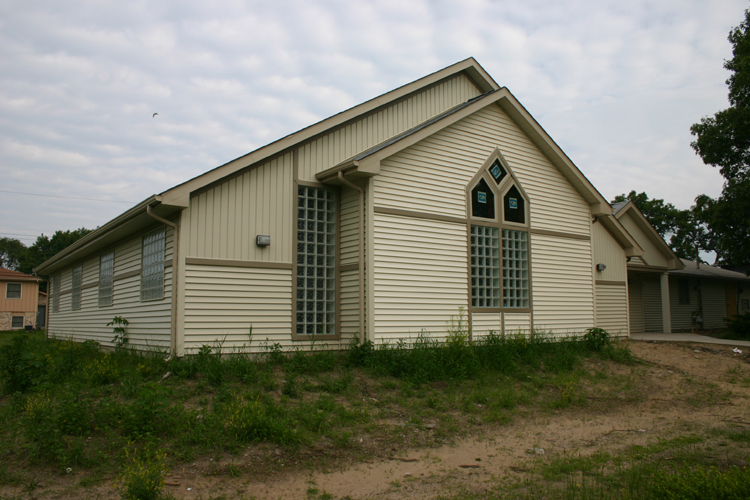

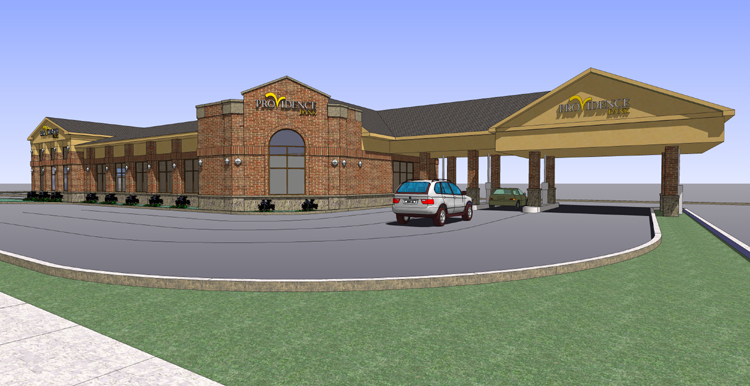

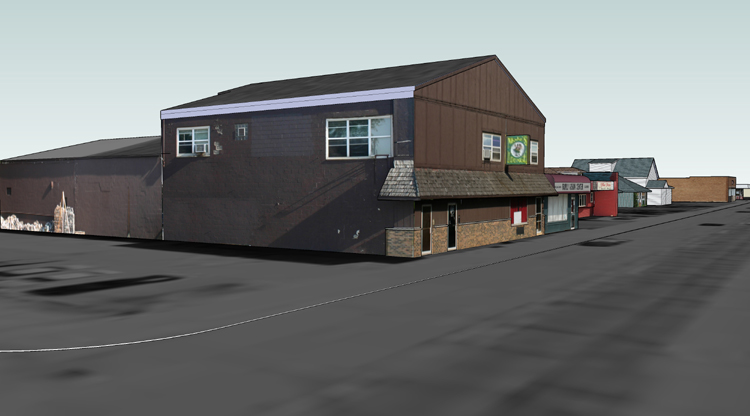
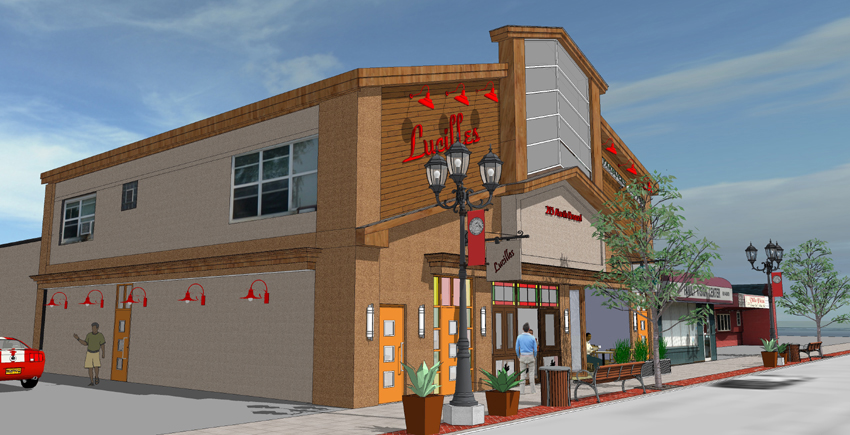
-
I love to draw technical stuff; airplanes, boats, houses, etc. But I am more into the details of the internal fabrication, than just a simple outer view. I have gone though several versions of ACAD 2D and then into ACAD 2 1/2D (they call it 3D, but it isn't), and was totally baffled by the so-called 3D interface. Never got a good render of anything, especially on my big cargo airplane concept, and it took forever to get anything right. Books and tutorials were no help either.
I tried TruSpace, also a dud in the interface area. And a few others that lasted maybe 10 minutes on my PC.
I subscribe to ZD-Net and 2 years ago they had a brief ad for SU. It looked interesting so I loaded it and tried it, without any tutorials to start me off.
In less than 2 hours just playing with it, I accomplished more than I could with ACAD in 2 weeks. By the end of day I had a decent 3D view of my big airplane, for the first time. I now have over 300mb in 15 files of that airplane as I design the internals; landing gear, fuel system, passenger cabin, cargo deck, cargo handling components, etc. All fit back to the master drawing, and each drawing is details on some set of internal components of the airplane.
Yeah, I know SU is a sketching tool, but with some tradeoffs I use it more like a 3D CAD.
Plus there are dozens of drawings of other stuff. One of the latest was a rendering of my main bathroom reno, which worked wonders in explaining to my contractor what I wanted, and to the cabinet maker.
Then I had to revamp our laundry area, as the new front load washer and drier would not fit in the space where the 28 year old top loads went. I carefully measured the space, and played with 7 options to place the W&D and move the laundry tub and shelving. I showed the "boss" the options and she said "that one". That one also showed an interference of 1 inch with the furnace relay box mounted on the side, so I had to move it to the inside, well before delivery. Then I completed the plumbing, electrical and shelving layers and from that made my hardware shopping list. I attach the SU file of that, and a photo of the laundry area, with some minor shelf changes requested by the boss and a view from the SU model at the same angle.
Next is the kitchen. With SU I can quickly depict many ideas and alternatives, for the boss's approval, then flesh out the final choice for the contractor and cabinet maker, rather than trying to repeatedly explain what is wanted, with restrictions and problems/suggestions to work around.
All you need to start is a very careful measurement of the area to make the basic layout, with at least one layer to show the existing for comparison. Taking photos of the existing helps a lot. Then get measurements of the various cabinetry and appliances you will need, and make simple outline groups/comps that you can place or move about. Make a layer or 2 for each alternative so you can quickly compare one to another. Then all you need to do is pan and zoom and display/hide layers to describe them. When the final layout is selected, add the plumbing and electrical components (on separate layers) for a real virtual fit and fiddle before anything starts up. Even paint schemes can be placed on layers to play with. Try all that in ACAD.
SU-6 file SU drawing of laundry area revamp with various layout options and final layout with details.


Advertisement







